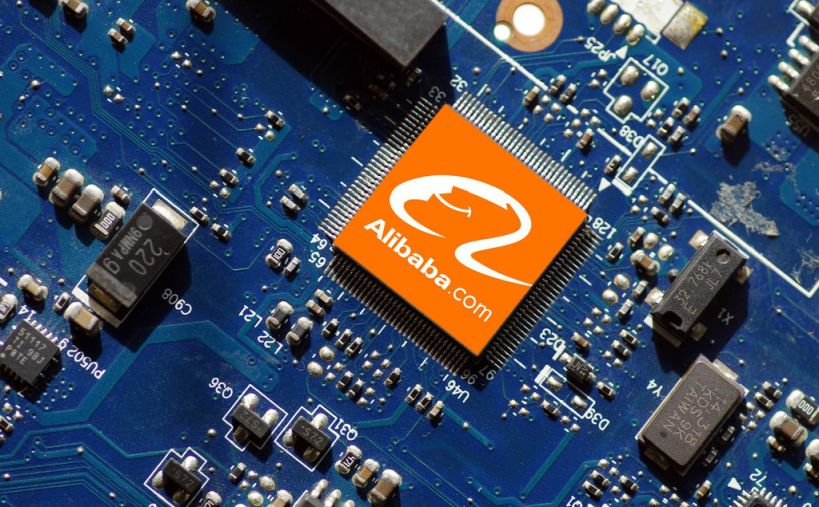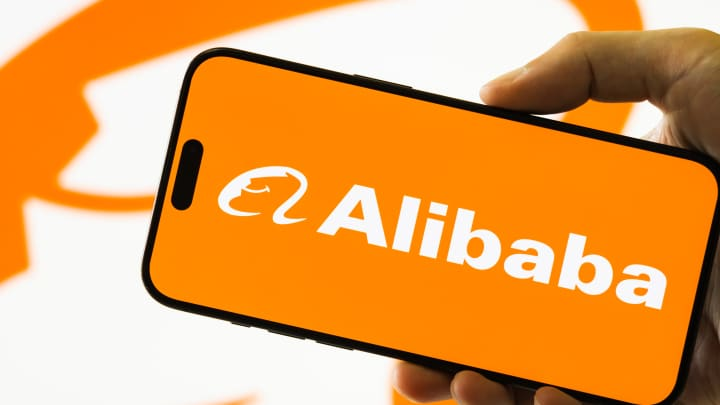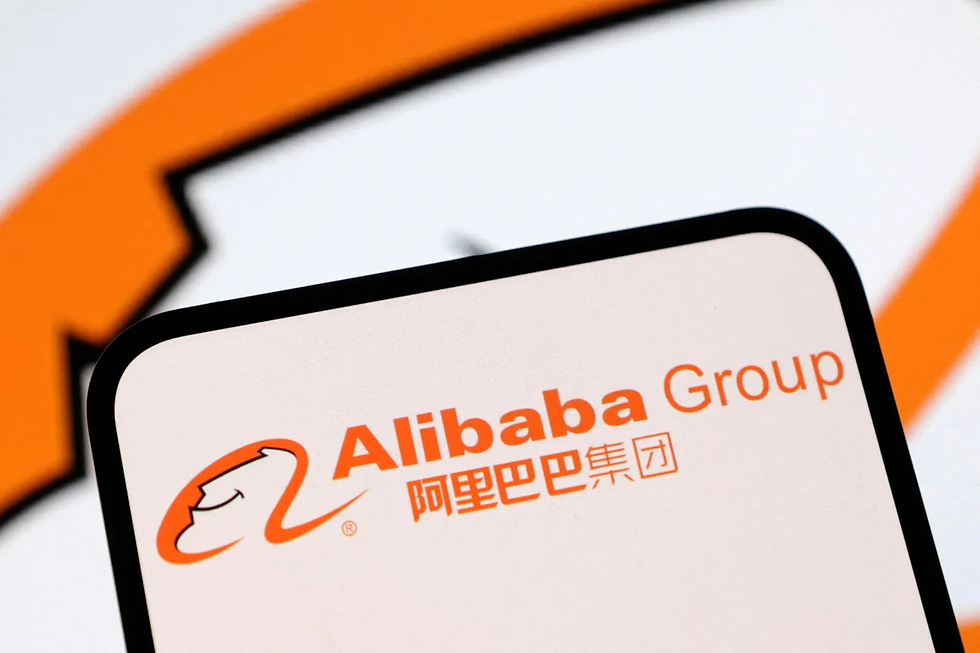Alibaba's New Chinese-Made AI Chip Aims to Replace Nvidia GPUs in Inference Jobs as Cloud Demand Surges
- Aisha Washington

- Aug 31
- 15 min read

Alibaba's new AI chip and the growing cloud inference demand
Alibaba's new AI chip is being positioned as a purpose-built, Chinese-made alternative to general-purpose Nvidia GPUs for large-scale inference workloads in cloud environments. Inference here means running trained machine-learning models to generate predictions or responses in production—think serving conversational AI, image recognition, or recommendation results to end users. The company markets the chip as optimized for the low-latency, high-throughput patterns that dominate cloud inference traffic today, with a focus on cost-per-inference and operational efficiency.
Alibaba is pitching a pragmatic value proposition: deliver similar or better inference performance at lower cost and tighter supply-chain control so cloud providers can potentially replace Nvidia GPUs in inference jobs.
Cloud demand for inference is surging as more applications move from experimental training runs to always-on production serving. That shift is why industry analysts and market watchers are debating whether a domestically designed chip can undercut Nvidia's entrenched position in inference: AInvest frames Alibaba's chip as a near-term disruption that targets Nvidia's inference ecosystem, while broader market analysis cautions investors about how quickly Nvidia's dominance could face pressure from specialized inference silicon and shifting cloud procurement patterns as discussed by the Financial Times.
Meta description suggestion: Alibaba's new AI chip targets cloud inference by promising lower cost-per-inference and tighter supply-chain control; could it replace Nvidia GPUs in inference jobs? Read architecture, benchmarks, deployment tips, and market implications.
What you’ll read in this article: a technical look at Alibaba AI chip architecture and inference optimizations, empirical and cost comparisons against Nvidia GPUs, practical deployment patterns for cloud operators, market and geopolitical implications of adoption, the developer ecosystem readiness, and an FAQ with clear recommendations for pilots and production migration.
Key takeaway: Alibaba's chip is focused on inference economics and operations, not displacing GPUs for all AI workloads overnight.
Market context and cloud demand surge

Rising inference volumes and why inference is the immediate battleground
Cloud platforms are seeing two distinct AI workload categories: training (one-time or episodic model creation) and inference (constant production serving). Inference tends to dominate CPU/GPU-hours in mature deployments because models are queried continuously by users and services, and inference costs scale with user activity.
Specialized inference silicon competes on steady-state cost-per-inference, latency tail behavior, and operational footprint rather than raw floating-point throughput used in training.
Two industry sources frame the economics and market opportunity that make inference the immediate battleground. The Financial Times highlights market projections and notes strategic risks to Nvidia’s share if vendors pivot procurement toward specialized inference solutions. Meanwhile, AInvest argues Alibaba’s new chip is explicitly aimed at the inference use case and could disrupt NVIDIA’s inference ecosystem by offering optimized hardware and software co-design for cloud serving.
Examples and trends:
Recommendation systems, personalized feeds, and chatbots all generate high-volume, low-latency inference traffic that runs 24/7.
As more companies deploy multi-region, low-latency services, cloud spend on inference instances has become a predictable, recurring cost that procurement teams aim to optimize.
Actionable takeaway: Cloud operators should treat inference as a separate procurement category from training; specialized chips that lower steady-state costs deserve pilots even if GPUs remain preferable for retraining and experimental work.
Key takeaway: Inference is the volume and margin battleground now; winning inference economics can meaningfully shift cloud vendor hardware strategies.
Alibaba AI chip architecture, design optimizations for cloud inference

Core architectural features targeted at inference
Alibaba AI chip architecture centers on hardware building blocks tailored for inference patterns rather than training-centric throughput. At a high level, the design emphasizes:
Matrix engines (large arrays optimized for dense matrix–matrix and matrix–vector multiplications), but with microarchitectural choices that prioritize low-precision arithmetic.
A memory hierarchy that reduces on-chip/off-chip data movement—critical because many inference workloads are memory-bound rather than compute-bound.
High-bandwidth, low-latency interconnects between chip tiles for tiled model sharding across devices in cloud racks.
Heavy support for low-precision compute (e.g., INT8, 4-bit and mixed-precision formats) and sparse matrix operations, enabling higher effective throughput per watt.
For cloud inference, minimizing data movement and exploiting reduced-precision arithmetic is often more important than peak FP32 throughput.
These design decisions are consistent with contemporary research showing that inference-focused chips benefit from specialized matrix and memory tradeoffs; recent studies on chip design and optimization for cloud inference explain the throughput/latency benefits of such architecture choices as explored in a broad design and optimization review for cloud inference workloads.
Software stack and model optimization techniques
A chip is only as useful as its software stack. Alibaba’s approach pairs hardware with a compiler/runtime designed to:
Provide end-to-end kernels for common operations in LLMs, vision, and recommendation models.
Automate quantization (converting 16/32-bit model weights to lower bit widths) and calibration to preserve accuracy while reducing memory and compute costs.
Expose scheduling primitives to orchestrate micro-batching, pipeline parallelism, and device-side memory eviction for very large models.
Offer a runtime that surfaces quality-of-service (QoS) controls and multi-tenant isolation, which are essential for cloud providers.
Effective inference optimization is a hardware–software co-design problem: the best latency and cost wins come from tight integration between compiler passes and runtime scheduling.
Technical papers on inference chip challenges and solutions document why compiler-level optimizations and kernel libraries are central to inference performance and demonstrate methods for latency and resource tradeoffs detailed in a focused study on inference chip design challenges and solutions.
Example scenario: A cloud provider porting a 7B parameter LLM for chat serving might use quantization to 4-bit weights, deploy sharded layers across multiple Alibaba chips with a runtime that hides I/O latency, and micro-batch requests to maximize device utilization while keeping p95 latency within SLA.
Actionable takeaway: For cloud inference, evaluate the maturity of the compiler/runtime and available kernel optimizations as much as raw silicon specs—these often determine real-world performance.
Key takeaway: Alibaba's chip emphasizes memory-efficient matrix engines, low-precision compute, and a software stack that automates quantization and scheduling—features that directly target cloud inference economics.
Tradeoffs versus GPUs for inference
Alibaba’s inference-optimized design introduces tradeoffs when compared with general-purpose Nvidia GPUs:
Latency vs throughput: GPUs offer flexible batching and extremely high throughput for large batch processing, but specialized chips can beat GPUs on single-request latency and cost-per-request when properly optimized.
Mixed workloads: If a data center needs to run both heavy training and inference on the same hardware pool, GPUs retain an advantage due to broad support and training throughput.
Ecosystem breadth: GPUs benefit from mature tooling and a massive ecosystem; specialized chips must close the tooling gap to be practical in production.
The right metric is cost-per-inference at required latency percentile (p95/p99), not peak TFLOPS.
Example: A real-time chat service prioritizing sub-100ms p95 latency for single queries may benefit from Alibaba’s chip at higher utilization; a research cluster performing frequent fine-tuning experiments will likely remain GPU-first.
Actionable takeaway: Map workloads by latency sensitivity and concurrency needs. Prioritize pilots for services where single-request latency and cost-per-inference dominate procurement decisions.
Key takeaway: Alibaba’s chip sacrifices some generality for targeted gains in inference latency, energy efficiency, and steady-state cost — a potent combination for cloud inference but not a universal replacement for GPUs.
Performance benchmarks and cost comparisons, Alibaba chip versus Nvidia GPUs for inference

Benchmark scenarios and methodology
Accurate comparison requires consistent scenarios and metrics. Benchmarks for inference should define:
Model families (e.g., LLMs of 7B, 13B; vision models like ViT; recommendation models).
Request patterns: single-query low-latency vs batched high-throughput serving.
Metrics: p95/p99 latency, sustained throughput (queries/sec), energy consumption per query, and effective cost-per-inference at realistic utilization.
Operational assumptions: network overhead, multi-tenant interference, and typical production batching.
Community analyses of GPU inference economics highlight the importance of modeling utilization and batching when calculating per-request cost, showing that simple instance-hour comparisons often misrepresent real-world economics a community analysis unravels GPU inference costs and shows how batching and utilization drive the true cost-per-inference.
Cost-per-inference and TCO analysis
Total cost of ownership (TCO) for inference fleets includes:
Instance or rack costs (capex/opex per device).
Energy and cooling.
Data-center floor space and power provisioning.
Software and ecosystem costs (ports, licensing, migration effort).
Utilization efficiency (how well the device is kept busy).
A compelling metric is cost-per-inference at target p95 latency. Alibaba’s chip aims to lower this by trading precision and leveraging tighter memory hierarchies and lower power draw, which reduces both energy and rack-level provisioning.
Example cost model: If an Alibaba chip can serve the same p95 latency as a GPU at 30–50% lower energy and instance cost, the cumulative 24/7 inference bill for a high-traffic service can be materially reduced. Community technical analyses of specialized workloads show this pattern, where optimized inference hardware yields better steady-state economics for production services examples of technical analysis show how specialized compute can be cost-effective for specific generative or scientific workloads.
Actionable takeaway: Build cost models using real traffic traces and p95/p99 latency targets to compare Alibaba chips and GPU instances; small per-request savings multiply quickly at production scale.
Key takeaway: Cost-per-inference at realistic utilization and SLAs is the decisive metric—Alibaba’s chip targets reductions here rather than competing solely on peak compute numbers.
Observed results and where Alibaba leads
Reported and community-observed patterns indicate Alibaba’s chip tends to outshine GPUs in:
Low-latency single-stream inference with aggressive quantization.
Energy-normalized throughput for highly-optimized kernels (e.g., INT8-backed transformer layers).
Rack-level density when the runtime can localize large models across tiles and avoid excessive network transfers.
Example: For a high-concurrency chat service that uses moderate-size LLMs and enforces tight p95 latency SLAs, an Alibaba chip-based instance could serve more concurrent queries per watt than a GPU-based instance after optimizing kernel pathways and using quantized models.
Actionable takeaway: Prioritize workloads that exhibit steady, high-volume inference traffic with tight latency SLAs for Alibaba chip pilots—these show the clearest win in cost-per-inference.
Limitations and where GPUs remain preferable
There remain clear scenarios favoring GPUs:
Mixed training + inference fleets where hardware reuse matters.
Very large-context LLMs requiring floating-point precision, where memory capacity and FP16/FP32 throughput remain critical.
Cutting-edge research workloads that rely on mature CUDA tooling and broad third-party model support.
Actionable takeaway: Maintain a dual-stack strategy during migration: use specialized chips for production inference while keeping training and experimental workloads on GPUs until tooling and model support reach parity.
Key takeaway: Alibaba chips can beat GPUs on cost-per-inference and low-latency single-request scenarios, but GPUs remain the right choice for mixed-use, cutting-edge, or very large-context model work.
Deploying Alibaba AI chip at scale in cloud environments

Integration patterns with cloud orchestration platforms
Real-world adoption requires robust orchestration and multi-tenant safety:
Kubernetes integration typically uses device plugins and custom device pools to expose Alibaba chips as schedulable resources.
Scheduling considerations include affinity/anti-affinity for colocating shards, reserving devices for latency-critical services, and quotas to protect noisy neighbors.
Multi-tenant isolation is essential—runtime sandboxes, enforced QoS, and cgroup-like isolation are necessary to prevent cross-tenant interference.
Treat the Alibaba chip as a new device class: plan device pools, admission controls, and upgrade paths just as you would for GPU fleets.
For practical guidance on real-time ML integration patterns and device orchestration, community tutorials and videos give operators hands-on steps for integrating non-GPU accelerators into cloud stacks a real-time machine learning and chip integration tutorial outlines device-plugin approaches and scheduling considerations. For edge-specific deployments and device orchestration patterns, an efficient edge-deployment guide provides useful patterns for hybrid strategies and bandwidth tradeoffs an efficient deployment video discusses when to push models to the edge vs central cloud.
Example deployment pattern: Run latency-sensitive endpoints on Alibaba-chip-backed node pools with small micro-batches, while routing bursty or heavy-batch analytical inference to GPU-backed pools.
Actionable takeaway: Implement device pools and autoscaling policies that differentiate latency-critical inference from batch inference; include admission and quota controls to protect SLAs.
Key takeaway: Integration requires mature orchestration, resource pools, and QoS controls—treat rollout as an infrastructure program, not a simple instance-type swap.
Real-time and low-latency inference strategies
Techniques to meet tight SLAs include:
Model partitioning and sharding to fit large models across chip tiles without excessive cross-device communication.
Micro-batching and request coalescing that minimize per-request overhead while preserving latency.
Offload patterns resembling FPGA pipelining—for example, fixing token-side attention kernels in hardware-accelerated paths to lower tail latencies.
Example: For an agent-based service that must respond under 100ms, shard the model layers across adjacent chip tiles, use a runtime with pre-allocated buffers for request handling, and tune micro-batch windows to maximize throughput without breaking p95 targets.
Actionable takeaway: Add observability for request tail-latency and dynamic micro-batch tuning to maintain SLAs while maximizing device utilization.
Edge and hybrid deployment for inference
When to run Alibaba chips at the edge vs centralized cloud:
Edge: When bandwidth is constrained, privacy or compliance requires local processing, or sub-50ms round-trip time is required.
Centralized cloud: When models are large and benefit from high-bandwidth interconnects, or when economies of scale in data centers lower per-inference cost.
Example decision rule: Use edge Alibaba chip instances for regional conversational agents that must comply with local data residency rules; centralize large-batch recommendation scoring in cloud racks for cost efficiency.
Actionable takeaway: Define a hybrid deployment matrix based on latency, privacy, model size, and bandwidth; test both edge and cloud node types in pilot phases.
Operational automation, monitoring and observability
Essential metrics and patterns:
Latency percentiles (p50, p95, p99), throughput, error rates, and resource contention indicators.
Tail-failure mode tracking: out-of-memory spikes, kernel degradation, and cross-tenant QoS breaches.
Canary rollouts and blue/green switches for runtime and model updates.
Actionable takeaway: Extend existing ML observability to include chip-level metrics (temperature, memory pressure, kernel latencies) and build automated rollback triggers on p99 SLA breaches.
Key takeaway: Operational readiness—autoscaling, observability, canary deployments—is a gating factor for production adoption; treat it as part of the migration cost.
Market dynamics and geopolitical implications of Alibaba's AI chip challenging Nvidia

Competitive landscape and market share projections
If cloud providers adopt Alibaba chips broadly for inference, it could create a meaningful procurement shift away from Nvidia for steady-state serving workloads. Analysts are watching whether Alibaba's offering can generate sufficient performance and cost differentiation to tilt purchasing decisions. The Financial Times flagged the potential for market-share changes as vendors seek supplier diversification and cost control the FT discusses risks to Nvidia’s share as cloud providers explore alternative silicon suppliers.
Example procurement shift: Regional cloud providers or hyperscalers operating in China and adjacent markets might prioritize Alibaba chips to reduce dependency on US-sourced GPUs and control long-term unit economics.
Actionable takeaway: Cloud procurement teams should quantify the value of supplier diversification in their TCO models and test Alibaba-chip-backed nodes in production pilots.
Key takeaway: A credible Alibaba inference stack could force re-evaluation of hardware sourcing strategies, particularly for inference-heavy services.
Geopolitical drivers and trade restrictions
Export controls, national security considerations, and technology sovereignty all influence hardware adoption. Media coverage and policy discussion suggest that export controls on advanced GPUs and political statements can accelerate local adoption of domestic chips as part of broader self-sufficiency strategies analysis outlines how geopolitical pressures can push regions toward non-US chip ecosystems. Similarly, investor and market commentary notes how regional stock and tech strategies shift in response to these policy winds MoneyWeek tracks broader China tech stock and policy implications.
Example outcome: A cloud provider that fears supply disruptions or export restrictions may deliberately invest in Alibaba-chip deployments to maintain service continuity for regional customers.
Actionable takeaway: Factor regulatory and geopolitical scenarios into long-range hardware roadmaps; maintain a mix of suppliers to reduce risk.
Key takeaway: Geopolitics can be an accelerant for domestic chip adoption, making Alibaba's offering especially attractive to regional cloud providers and government-contracted services.
Enterprise procurement and vendor lock-in risks
Switching inference fleets entails migration costs: porting models, retraining optimization pipelines, and operational retooling. Vendor lock-in risks include subtle ecosystem dependencies such as proprietary runtime primitives, monitoring integration, and specialized toolchains.
Actionable takeaway: Negotiate vendor-neutral interfaces, insist on standards (ONNX, widely-supported runtimes), and build migration playbooks that isolate hardware-specific code paths.
Financial and investor reactions
Market watchers will monitor adoption signals—pilot deployments, OEM partnerships, and cloud provider ROIs—as indicators of potential revenue shifts. Investors read early commercial traction and procurement wins as leading signals for material market-share changes.
Actionable takeaway: Investors should track procurement announcements, open-source tooling adoption, and third-party benchmark publications as early indicators of sustainable adoption.
Key takeaway: Procurement choices, regulatory pressure, and demonstrated TCO wins are the proximate signals that could materially affect Nvidia’s inference market position.
Developer ecosystem, community tooling and optimization workflows for Alibaba AI chip inference

Framework and library support
Developer adoption depends on runtimes and compatibility:
Support for major frameworks (PyTorch, ONNX Runtime, TensorFlow) and seamless model conversion are priorities.
Tooling that automates quantization, kernel selection, and runtime mapping reduces migration friction.
Community efforts and videos document how large-model optimization workflows are evolving; collaborative initiatives around PyTorch optimization and large-model tooling are already shaping best practices a PyTorch combined optimization community video outlines combined efforts to improve large-model performance. Broader state-of-AI reviews capture how teams operationalize agents and production models, offering practical lessons for porting models to new hardware the State of AI community video covers productionization patterns that are relevant to any new chip ecosystem.
Example migration tip: Convert models to ONNX, apply quantization-aware training or post-training quantization recipes, then validate end-to-end accuracy and latency in a canary environment before fleet migration.
Actionable takeaway: Early adopters should prioritize workloads with existing ONNX-compatible pipelines and invest in automated conversion and validation tooling.
Key takeaway: Framework compatibility and automated optimization tooling are the levers that determine developer productivity and migration velocity.
Community optimization efforts and shared ops
Open kernel libraries, shared quantization recipes, and community benchmarks accelerate adoption. Collaborative optimization projects reduce duplication of effort and surface best-known methods for mapping transformer blocks to accelerator primitives.
Example: A community kernel library might offer a tuned attention operator for Alibaba chips, enabling a handful of cloud providers to reuse optimizations rather than reimplementing them.
Actionable takeaway: Encourage participation in shared repositories for kernels and quantization recipes, and consider open-sourcing internal optimizations to attract community contributions.
Tutorials, reference deployments and reproducible benchmarks
Reference deployments and reproducible benchmarks are critical for procurement and engineering teams to evaluate performance claims. Starter templates for CI/CD model deployment, canary rollout patterns, and reproducible latency/throughput tests shorten evaluation cycles.
Actionable takeaway: Build a reproducible benchmark suite that mirrors production traffic—this will reveal real differences in p95/p99 latency and cost-per-inference.
Developer adoption barriers and recommended mitigation
Common barriers:
Documentation gaps and immature SDKs.
Limited third-party plugin support and fewer pre-tuned kernels.
Migration cognitive load for MLOps teams accustomed to CUDA ecosystems.
Mitigation:
Invest in internal docs and migration playbooks.
Sponsor or collaborate on community tooling to accelerate kernel maturity.
Start with low-risk pilot workloads and build internal expertise gradually.
Key takeaway: Community tooling and clear migration playbooks are decisive: invest early in developer enablement to lower long-term migration cost.
FAQ — common questions about Alibaba replacing Nvidia GPUs in inference jobs

Q1: Can Alibaba's chip match Nvidia GPUs for all inference workloads?
No. Alibaba's new AI chip is designed to excel at many inference workloads—especially low-latency, high-volume serving—but it does not universally match GPUs for every scenario. GPUs remain preferred for mixed training/inference fleets and very large-context models due to their flexibility and broader software support.
Q2: What are real migration costs to switch inference fleets?
Migration costs include model porting, testing and validation, tooling changes, staff training, and potential short-term efficiency losses. Quantify costs by running a pilot on representative workloads, measuring porting hours, and estimating the tuning effort needed per model.
Q3: How mature is the software ecosystem and model support?
Ecosystem maturity is growing but uneven. Basic framework support (ONNX, PyTorch exports) and runtime components are typically available early, but a full parity of optimized kernels and third-party integrations takes time. Community optimization efforts accelerate this process.
Q4: What timelines should cloud providers expect for large-scale adoption?
Expect phased adoption over 12–36 months: initial pilots in months, expanded production for select services within a year, and material fleet shifts only after multiple years and demonstrated TCO wins.
Q5: How do geopolitical risks affect adoption decisions?
Regulatory pressures and export controls can accelerate local adoption of domestic chips. Providers should model geopolitical scenarios and consider supplier diversification as part of their long-term resilience strategy.
Q6: What workloads should be prioritized for early migration?
Prioritize high-volume, latency-sensitive inference services with stable model shapes and good quantization tolerance—recommendation engines, chat endpoints with medium-size LLMs, and image classification/matching pipelines.
Conclusion: Trends & Opportunities — forward-looking analysis and recommendations
Near-term trends to watch (12–24 months) 1. Pilots and early production for latency-sensitive services: expect major cloud operators in China and regional providers to run pilot fleets on Alibaba chips for chat and recommendation services. 2. Rapid iteration on runtimes and kernel libraries: community and vendor efforts will accelerate optimization for common transformer kernels and quantization paths. 3. Procurement diversification driven by geopolitical risk: supply-chain and policy pressures will make domestic chips more attractive in some regions. 4. Hybrid hardware strategies: cloud providers will increasingly adopt multi-tier fleets—specialized chips for inference, GPUs for training, and CPUs for low-demand endpoints. 5. Observable TCO signals: once cost-per-inference and p95/p99 metrics from independent benchmarks become available, adoption curves will accelerate or stall accordingly.
Opportunities and first steps 1. For cloud operators: launch structured pilots on representative, high-volume inference workloads; instrument p95/p99 latency and cost-per-inference; run side-by-side canaries with GPU-backed services. - First step: pick two production services with stable models and run a 4–8 week pilot measuring SLA adherence and operational overhead. 2. For MLOps teams: build vendor-agnostic CI/CD flows (ONNX-first), add quantization and accuracy-validation stages, and expand observability to device-level metrics. - First step: create a portable benchmark suite that replicates production traffic and automates accuracy and latency regression tests. 3. For investors: monitor vendor announcements, procurement wins, independent benchmark publications, and ecosystem tool contributions as leading adoption indicators. - First step: track procurement announcements from regional cloud providers and benchmark reproducibility from community projects. 4. For developers: invest in learning quantization-aware pipelines, automated model conversion, and runtime-specific performance tuning. - First step: port a medium-size model to the Alibaba chip runtime in a sandbox and publish reproducible benchmarks to your team’s repo. 5. For policymakers and procurement leads: model supply-chain resilience scenarios and include domestic-chip options in strategic procurement exercises.
Uncertainties and trade-offs
Tooling maturity and ecosystem gaps remain the largest practical barriers. Without robust runtime libraries and community optimization, theoretical cost advantages may not materialize.
Some workloads will still favor GPUs; a complete replacement is unlikely in the short term. Expect coexistence and specialization by workload.
Geopolitical drivers may accelerate regional adoption but could also fragment ecosystems, increasing long-term integration costs.
Final recommendation: Treat Alibaba's new AI chip as a strategic option for inference fleet optimization—run rigorous, traffic-representative pilots, measure cost-per-inference at SLA percentiles, and maintain a dual-stack approach until tooling and demonstrable TCO savings justify broader migration.
Insight: If Alibaba's chip consistently delivers lower cost-per-inference at required p95/p99 latency for your key services, the business case for incremental fleet migration becomes compelling—start with pilots, quantify the savings, and plan for incremental rollout rather than a rip-and-replace.
Key takeaway: Alibaba's new AI chip is a credible, inference-focused alternative that can replace Nvidia GPUs in inference jobs for many production scenarios—especially where latency, energy efficiency, and supply-chain considerations dominate procurement decisions.


